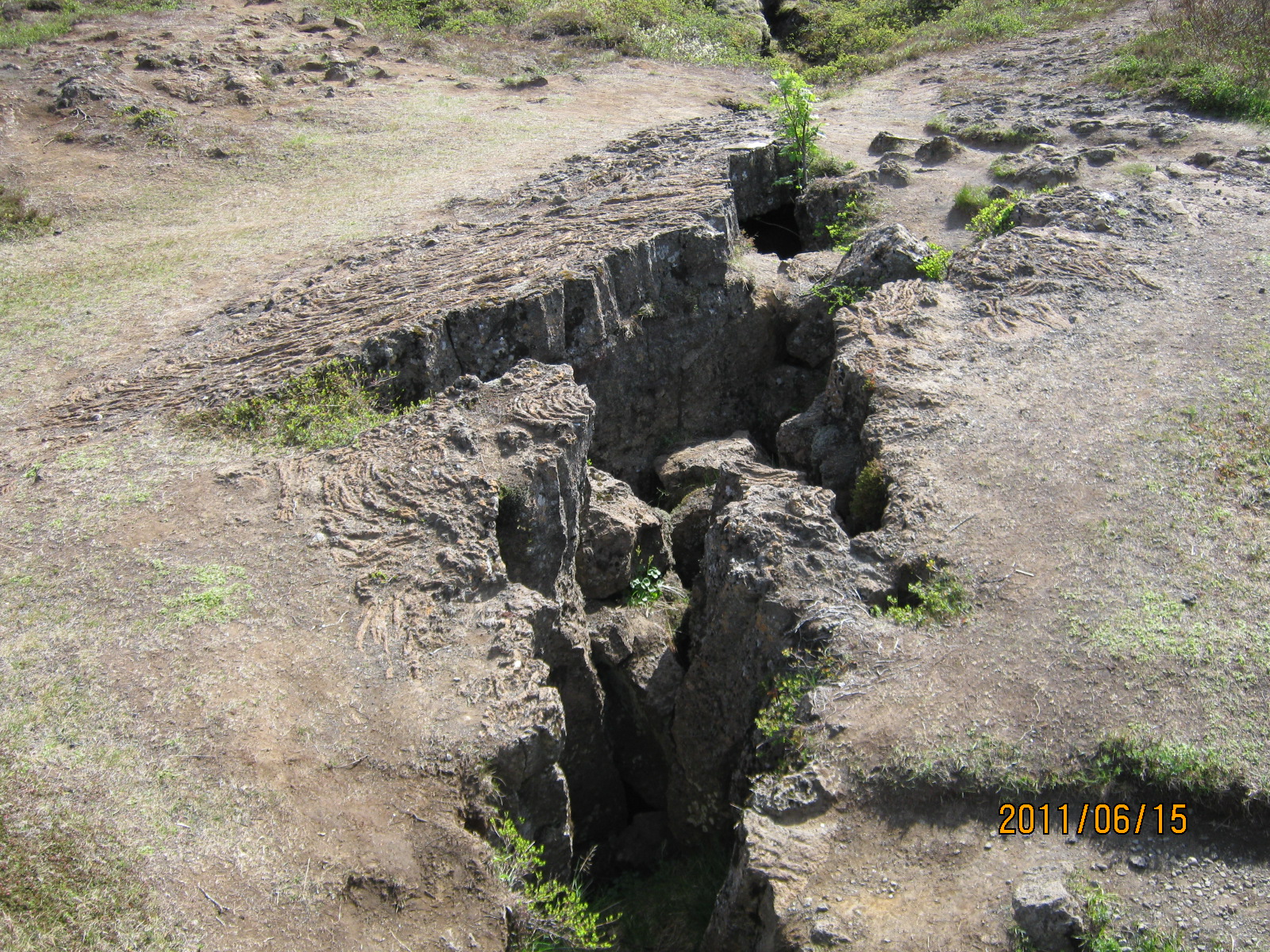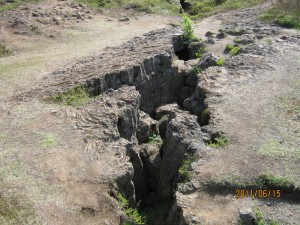I am just back from a week of sightseeing on Iceland, but I also managed to fit in a handball game, namely the final European qualifying game between Iceland and Austria. Moreover, I had the opportunity to meet with some of my old handball friends.
The game rather quickly became a bit anticlimactic. Iceland needed to win the game in order to qualify, so there were some nerves involved prior to the game. But soon it became clear that Iceland had regained some of that fighting spirit that seemed missing in the World Championship earlier this year. Their defensive play, including the goalkeeping, was really solid and the Austrians became increasingly desperate. The Icelandic team also managed to use their own chances very efficiently, so the final result 44-29 really reflected the action quite well. The Reykjavik handball arena is rather small, with room for only 2500-3000 spectators; but a different way to look at it is that one percent of the entire population of the country was there to watch the game and cheer on their favorites frantically.
Iceland relied mostly on their experienced players. Thirteen of the players from the World Championship were on the team, most of them at age 30 or above. Only goalkeeper Bjorgvin Gustavsson (25) and Aron Palmarsson (20) have yet to acquire veteran status. Three younger players who are still playing for Icelandic clubs had also been added to the squad, and they got a chance to get out on the court in the final minutes.
More generally, my Icelandic friends described a situation where the flow of new, young talents continues undiminished. The ‘U-21’ team narrowly lost in their World Championship qualifying, having to play Serbia at their home court. And the Icelandic league continues to remain competitive, at least among the top 4-6 teams, despite the fact that no less than almost 60 men’s players are enrolled in clubs abroad, with about half of them in Germany.
I pointedly noted that we are seeing talented Icelandic athletes joining American universities on basketball scholarships; does this in any way suggested that handball is losing its dominating position in Iceland? My friends, who are obviously a bit biased, offered a somewhat joking explanation: if a young talent absolutely wants to study in the U.S., then they reluctantly have to choose basketball; or else the explanation is that they realize that they simply do not have the talent to make it to the top in handball…
The men’s champion of the 2010-11 season in Iceland was FH (from the Reykjavik suburb of Hafnarfjordur) who beat Akureyri (from the North Coast) with 3 games to 1 in the play-off finals, thus reversing the positions from the regular season. FH will now participate in the qualifying round of the EHF Champions League. The other two teams in the play-offs was the Reykjavik club Fram and HK Kopavogur. The traditionally strong clubs Haukar and Valur finished next in line.
By the way, veterans Olafur Stefansson and Gudjon Sigurdsson are moving from Rhein-Neckar Lowen to AG Copenhagen for 2011-12, a move that has upset the Germans and has highlighted the complications arising from the fact that both clubs have the same Danish owner. On the other hand, goalie Gustavsson is moving from Switzerland to Magdeburg.
Further to the remarkable feat of Icelandic handball to place so many players in top clubs abroad, one should also remember how many top coaches are working in exile. Gudmundur Gudmundsson, Alfred Gislason and Dagur Sigurdsson may be the most prominent names due their work with top clubs in the Bundesliga, but one should also mention Thorir Hergeirsson who is in charge of the strong women’s national team in Norway. In total, about 15 Icelandic coaches are active abroad. By the way, I got some informal comments that the EHF punishment of Gislason had fallen well short of what had been expected in Icelandic handball circles.
Finally, as some of our (Pan)American readers are aware, there has been an ongoing debate about the legitimacy of an IHF decision to assign Greenland to the PanAmerican continent. But I got a clue during my visit that, in fact, the IHF may have had more of a tangible, scientific basis for this decision than what may have been understood. If anything, the question might arise whether one should really consider Iceland as a part of PanAmerica as well.
The photo at the top provides the clarification. Iceland sits atop the ‘Mid-Atlantic Ridge’, which separates the North American and Eurasian tectonic plates; these are moving apart in a process known as the ‘continental drift’. This drifting is related to earthquakes and tremors, and perhaps also to volcanic eruptions. Nowhere is this division as visible as some distance east of Reykjavik, in the area of Thingvellir, where the Icelandic Parliament was established in the year of 930. So perhaps we should take some credit and argue that most of the Icelandic handball players should in fact be considered ‘American’!? At least perhaps, apropos John Ryan’s recent articles on the topic, they might qualify for dual citizenship!
P.S. If you wonder why there is not one word about women’s handball above, that is because I felt that the belated but remarkable progress on Icelandic women’s handball at the international level warrants a separate article that will come soon!


Pingback: Icelandic handball still going strong – Team Handball News | Iceland travel guide